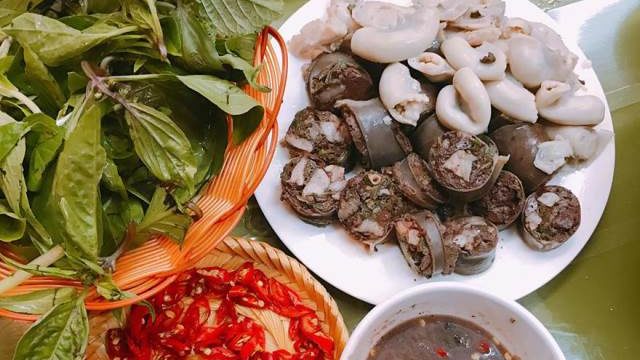Dish of the Day: Intestine, Colon (Long Non Trang)
Intestines and colon and the insides are not parts that are enjoyed by everyone. Those who enjoy eating must have developed a liking to it or have a refined taste bud. While it might sound off-putting to most, when the cooking has the right flavour combinations and cooking method, you are sure to be surprised.
In Vietnam cuisine, the intestines and colon of a cow are often used in their dish, that is better known as Long Non Trang. Using classic Southeast Asian flavours, Long Non Trang will surely convert even the ones who are initially hesitant and make them love the dish.
What is Long Non Trang
The Long Non Trang is basically the intestine and colon of a pig that is either deep-fried or boiled and eaten like snacks. It is prevalent to see Long Non Trang in the streets of Vietnam. The dish is prepared by boiling the intestine and colon for some time before soaking it with salt and lemon juice. This is to get rid of the after-taste that typically comes from an animal’s interior organ.
The intestines that have been boiled and salted are usually cut into smaller bite-sizes before deep-frying them in hot oil. Vietnamese typically enjoy this dish as it is or with a sauce such as light chilli sauce or a spicy fish sauce.
The use of intestine in Vietnamese cuisine
To most people, the idea of eating interior organs may sound strange, but in Vietnam, it is common practice to make use of every part of the animal in their cooking. The locals have created multiple recipes using the internal organs of animals to avoid wastage.
The Vietnamese love eating pork, and that is why it is more common to see the organs of a pig being used compared to other animals like sheep or cow. Apart from the intestine, the Vietnamese also uses pig’s brain to make Sup Cua Oc Heo or Vietnamese Crab soup as the locals believe that eating the brain will help make their kids smarter.
The use of pig’s blood is also widespread in Vietnamese cuisine. For example, it is used to make Tiet Canh – a pudding made of pig’s blood that is typically served with beef noodles. However, people are often advised to be careful when consuming any dish that contains pig’s blood as it has a higher chance of contamination.
The pig’s intestine, on the other hand, is used in a broader range of Vietnamese cuisine, and it is safer to eat. Apart from deep-frying, the locals also enjoy the Doi, which is their version of blood sausage or adding it to porridge which is called Chao Long and is best consumed with beer.
The intestine is often scrubbed with salt and lime juice before being rinsed in cold water to remove the pungent smell. After washing, the organ will be soaked in cold water for at least 30 minutes.
Intestines that have been treated will then either be boiled, marinated with local ingredients or cut into bite-sizes to prepare them for the Vietnamese cuisine of choice.
Where to try Long Non Trang in Malaysia
If you are up for a culinary adventure, head to Goon Wah Restaurant in Jalan Kuchai Lama to try their Stir-fried Pork Stomach and Intestine. Another recommended restaurant is the Five Senses in Westin Hotel, Bukit Bintang for their Thinly Sliced Pork Intestines.
Find more Vietnamese cuisine on foodpanda!
